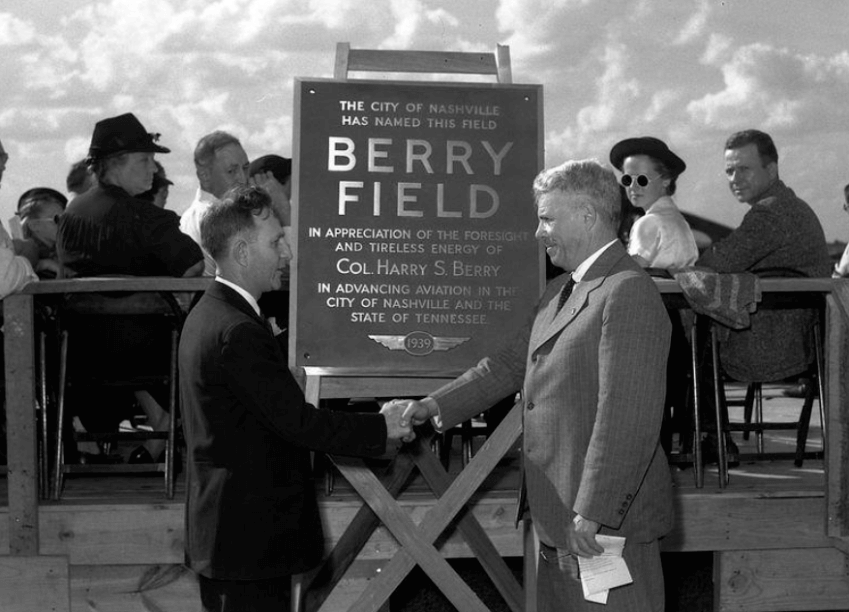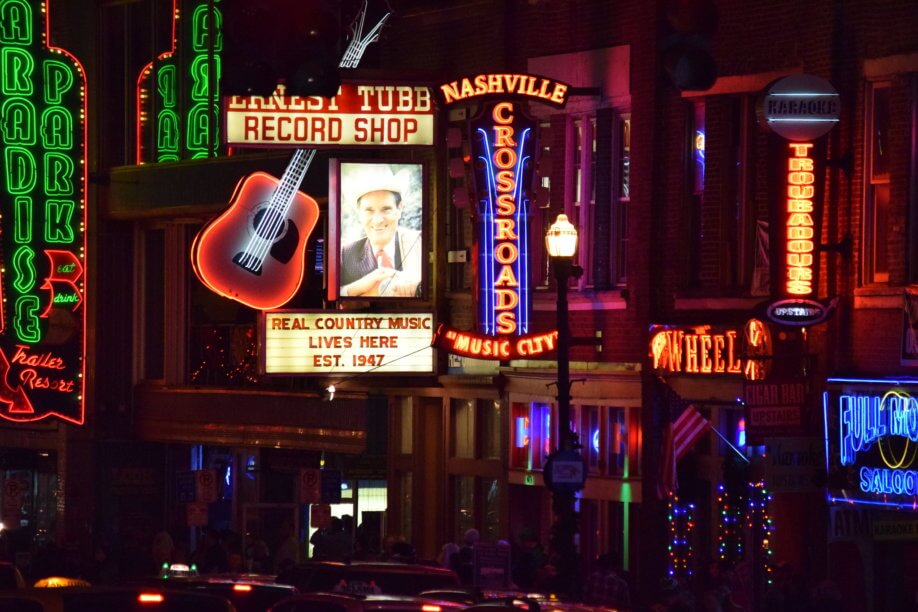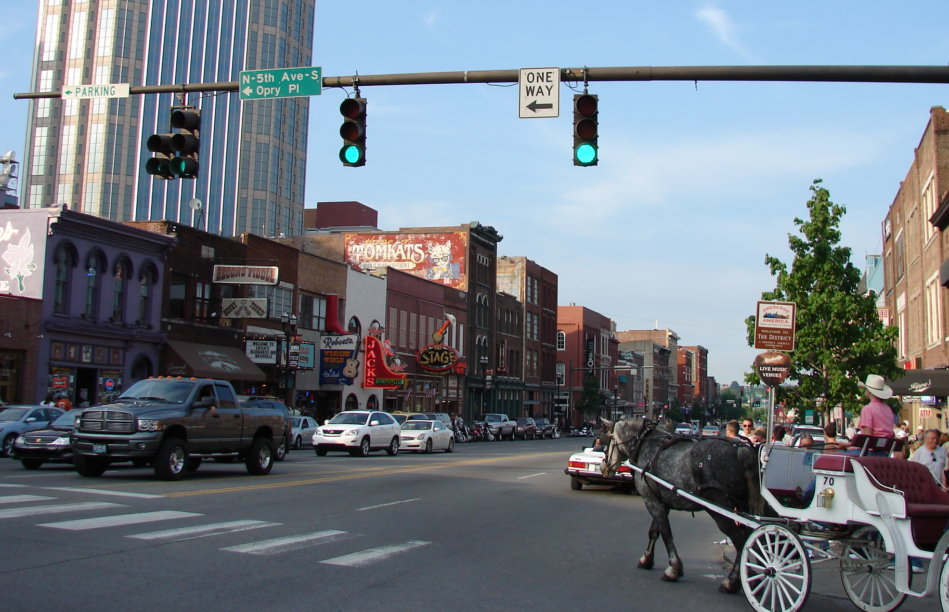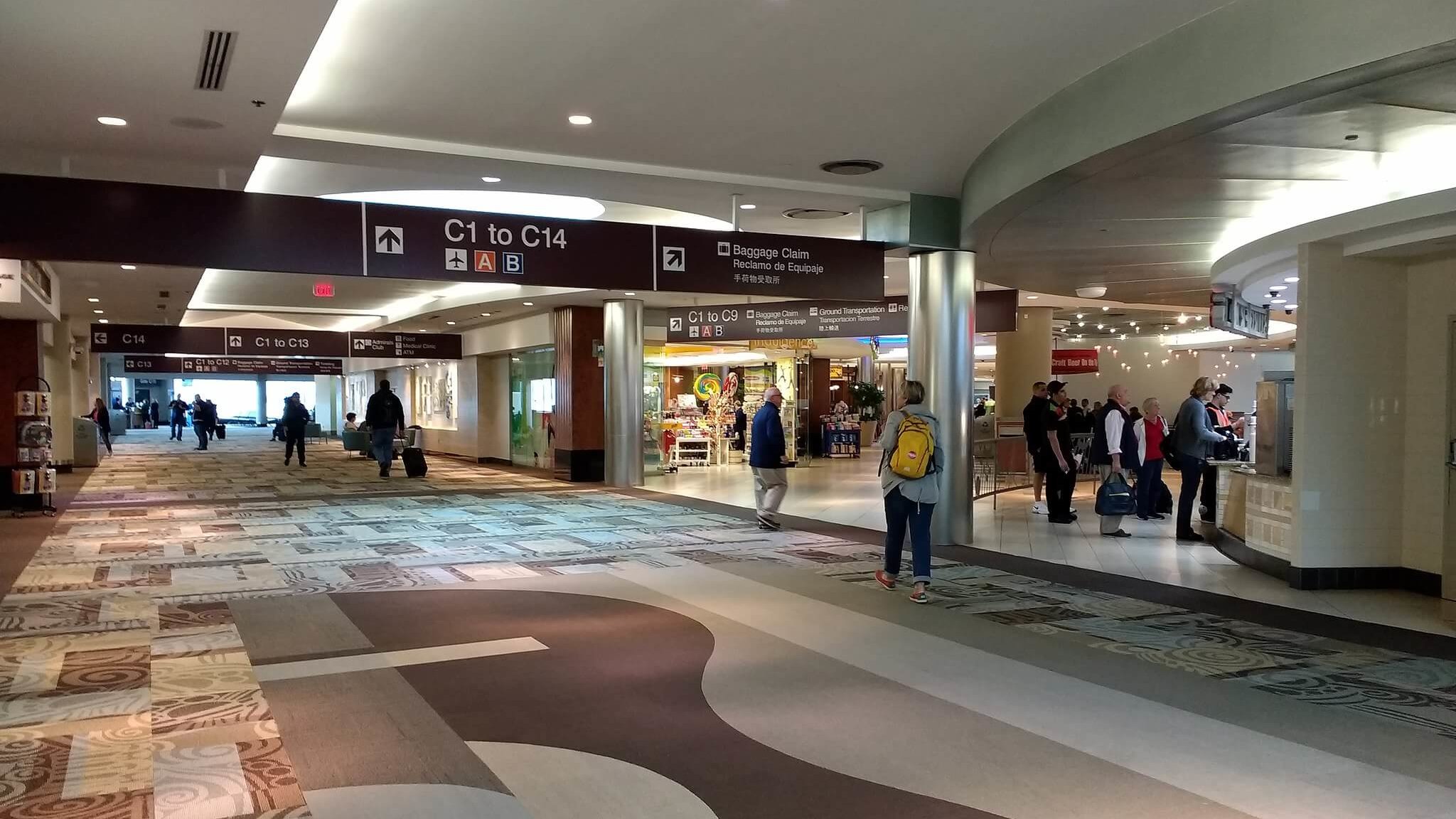“Bienvenue y’all!” reads a curious sign at certain of the arrival gates in the BNA airport. Why? I have wondered since ca. 2019. Nashville, Tennessee is hardly a hub for francophones; Spanish is by far the most common non-English language spoken here. Maybe it’s a playful contrast of the high-cultural gloss of France with the down-to-earth sensibility of the American South.
This tongue-in-cheek humility—“lil’ ole me?”—has typified Nashville’s response to its growing international reputation. It’s a classic bind: How can Nashville preserve its weirdly specific charm, while also serving the needs of its fast-growing, affluent and cosmopolitan tourist and resident populations?
BNA acutely reflects this tension, presenting Nashville’s culture as a kitschy package to be enjoyed in the context of a familiar, quasi-luxurious atmosphere. Charm, plus comfort. Call it southern hospitality; call it good business.
Growing up, I appreciated many of our airport’s unique features: the capacious hallways, the short lines at security, and the disarming “Hey y’all” wafting from the PA, as country stars welcomed me back to Music City. I appreciated, too, the music-themed carpet’s serene, abstract tessellation of muted blue and green, beige and brown panels, a feature I’m not alone in admiring; the carpet has amassed a devoted following on Instagram.
Yet, as a supercilious tween, I’d cringe when fellow passengers applauded our plane’s touchdown in Nashville. Some years later the applause stopped altogether, a fact I only became conscious of recently; now, I confess, I miss the claps and cheers and yeehaws. My renewed awareness of this decline has prompted me to clock changes in the character of the airport—and in my hometown at large—as they occur.

BNA (Berry Field Nashville Airport) was founded in 1937, named after Col. Harry S. Berry, a World War I veteran who served as Tennessee’s supervisor for the Works Progress Administration. As one of the earliest and biggest WPA projects in the region, BNA opened to considerable fanfare in the form of a parade and an air show. Today, it’s rare to see the “Berry Field” portion of the name, despite the enduring “B” in BNA. To most it’s simply Nashville’s airport, the one and only.
Despite the fact that I haven’t lived in Tennessee for many years now, BNA is my airport. Nashville is my home; this is a cliché, but I can’t scrub it off, hard as I once tried when I moved to the big city; in time, I learned, I didn’t really want to.
When I moved to New York years ago, people often reacted with pity when I told them where I was from, their responses more or less conveying, “Good for you for escaping that racist, conservative hellscape.” But this began to change around 2018. People’s attitude towards Nashville (and the South in general) began to shift from disdain to intrigue. The very things that once repelled—country music, cowboy boots, and God—now endeared. These days, I find myself following a script from an oft-repeated scene: New Yorkers tell me about their visits to the honky tonks, and praise Southern friendliness; I tell them about the churches on every corner and the proliferation of talented musicians. The city’s changed a lot, I add, and is beginning to resemble Williamsburg.
New Yorkers, I think, find comfort in knowing that a place like Nashville is out there and that they themselves could, theoretically, embark on a simpler life, one with porches, sweet tea, and friendly neighbors. The more people migrate there, however, the less the city adheres to that quaint ideal.
In the same way, BNA tries to have its cake and eat it too—preserving the dream of Nashville,
while catering to an increasingly insatiable global consumer base.
 Toto (CC BY-ND 2.0) via Flickr
Toto (CC BY-ND 2.0) via FlickrTo its credit, the airport’s doing a pretty good job of balancing these interests with a recently-launched expansion plan, “BNA Vision.” Its goals are ambitious: renovation of the existing terminal as well as the construction of an International Arrivals Facility, with six international gates, a parking garage, a canopy and a pedestrian bridge. The developers promise to incorporate “abundant natural light and compelling views of the airfield,” and to launch new dining and retail amenities. This last point is where the dream of Nashville is most particularly preserved. In the midst of the dramatic economic expansion, developers widen avenues of consumption in order to articulate the city’s character.
The airport has supplemented the usual Starbucks and Burger Kings with a slew of favorite local, artisanal and farm-to-table establishments: 8th & Roast Coffee Co., Barista Parlor, and Bongo Java for coffee; Little Harpeth Brewing, Tennessee Brew Works, Yazoo Brewing Company and Puckett’s Grocery & Restaurant for food and craft beer. These names evoke a sense of home for locals; visitors are intrigued and ready for discovery, the opportunity to become a little bit “in the know.”

This trend is a direct response to our pervasive fatigue with the wall-to-Wal-Martification of the world’s retail landscapes. Until recently, airports could get away with merely gesturing at the local with places like the “Chicago Cubs Bar & Grill ” at O’Hare—places that plainly do not and could not exist outside of the airport. But by “going local” and truly local, BNA reinforces Nashville’s contemporary mythos: part-God-fearing cowboy, part hipster, and part foodie capital.
On my last visit, the airport was teeming with people. It was Memorial Day weekend, and the bachelorettes were in full force. A crew of sash-clad women asked me to take a group shot of them outside of Tootsie’s Orchid Lounge. They were surprised to learn I was a Tennessee native, and I in turn was surprised to realize that I haven’t lived there for nearly a decade: a moment of disbelief, of panic, of loss. And then I bought a vegan blueberry scone, leaving the group to embark on their weekend revelries.






